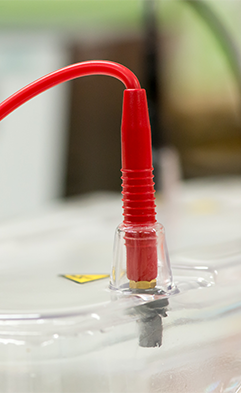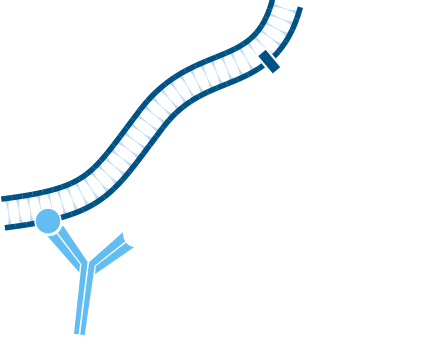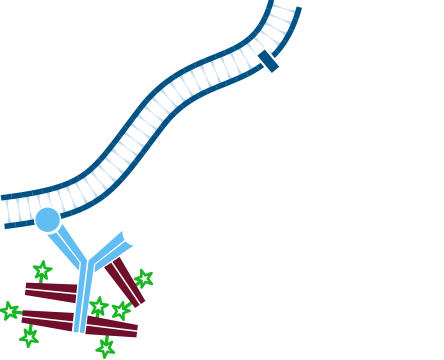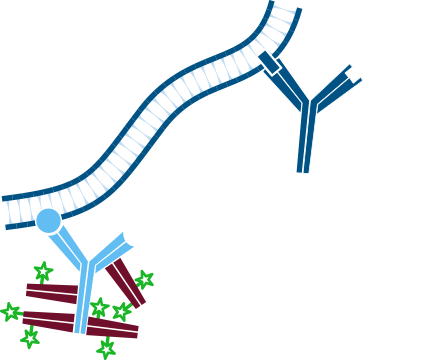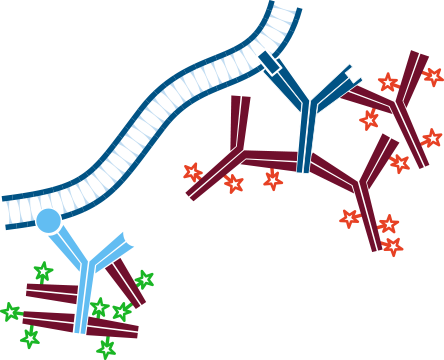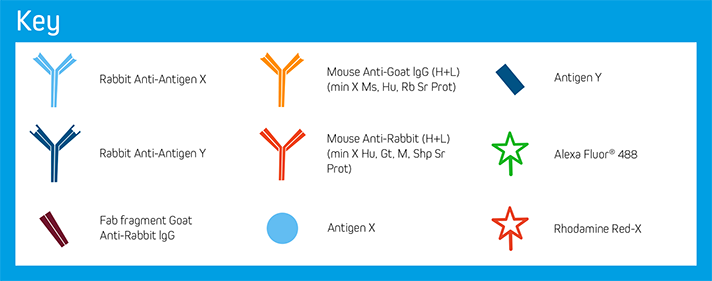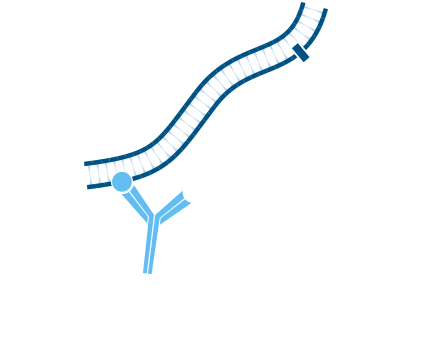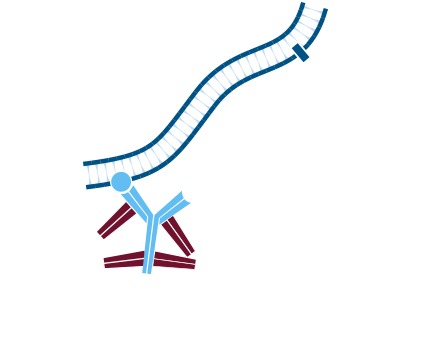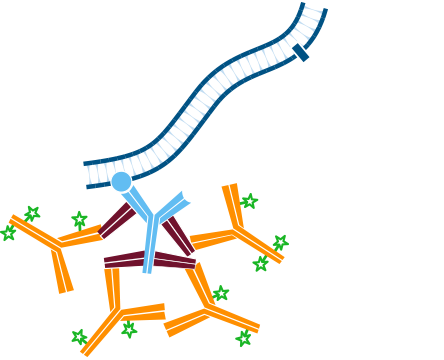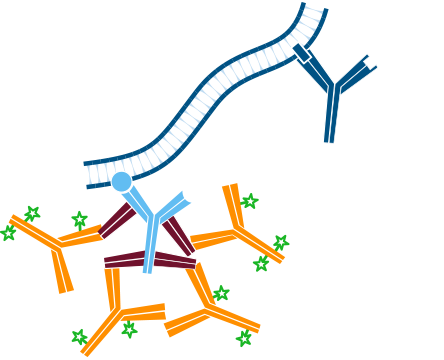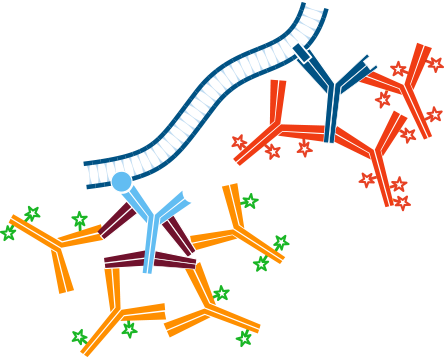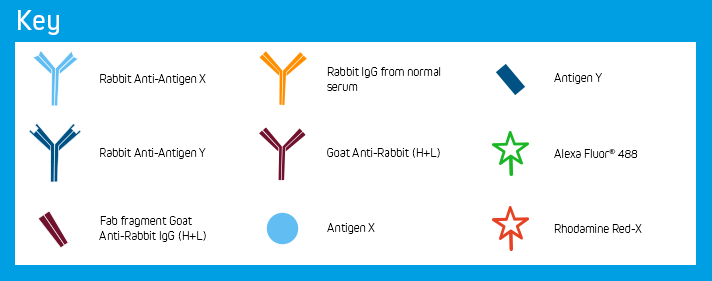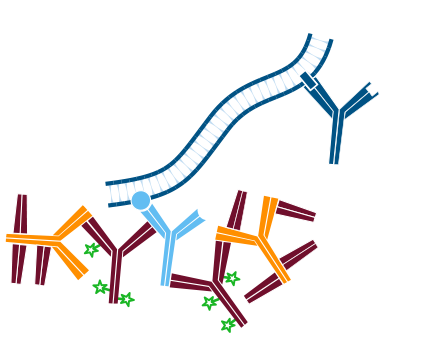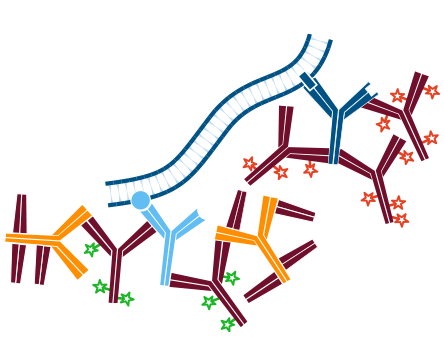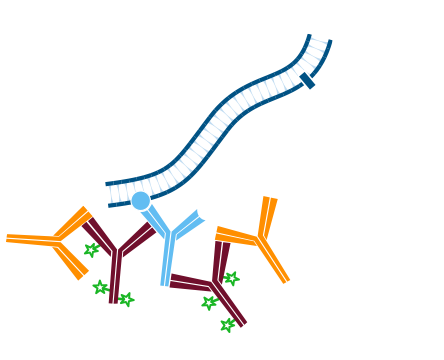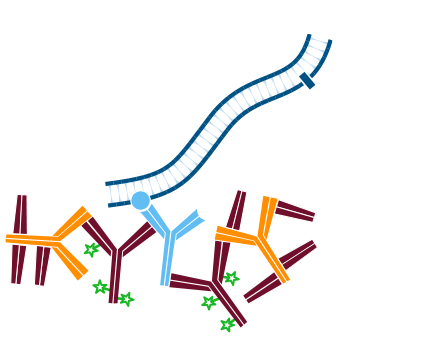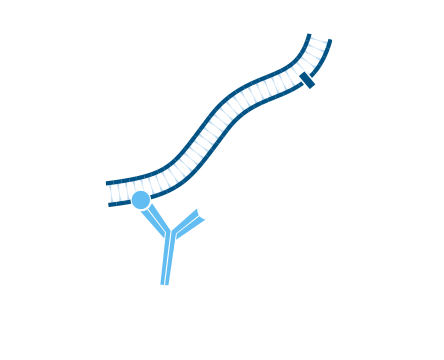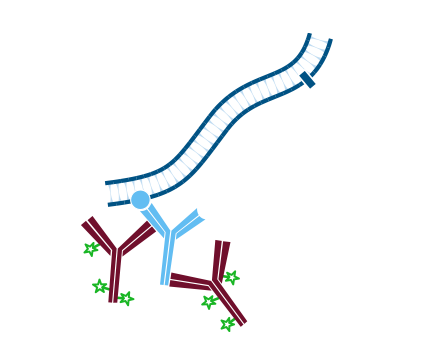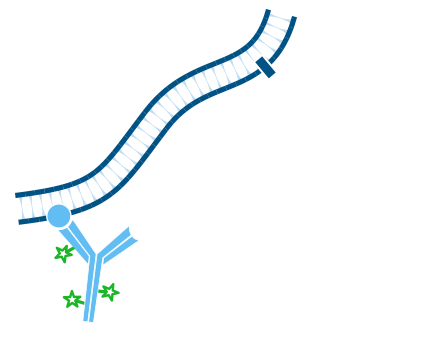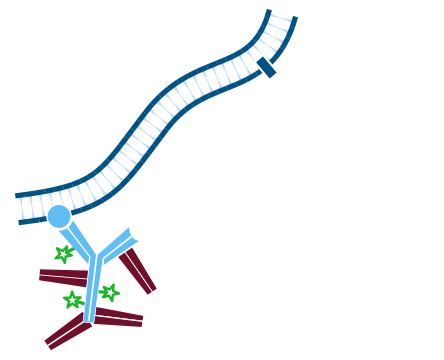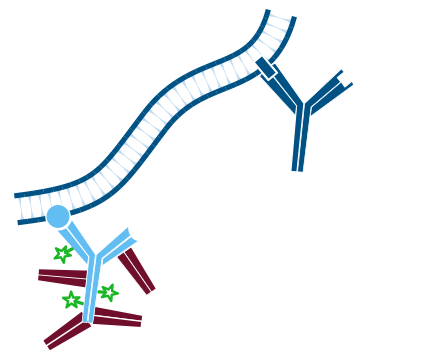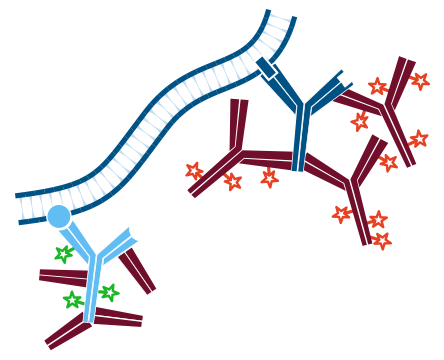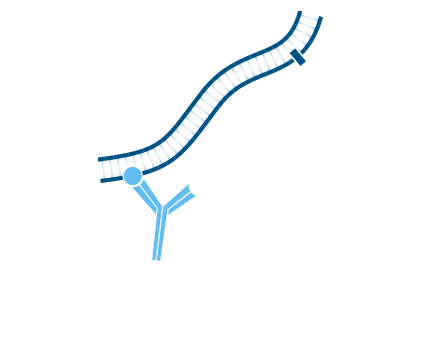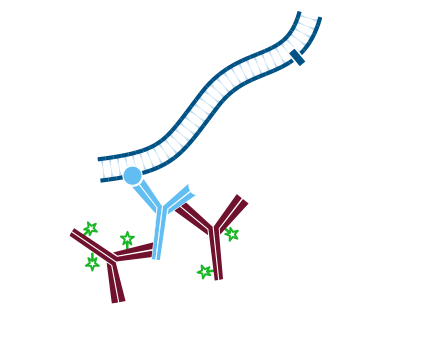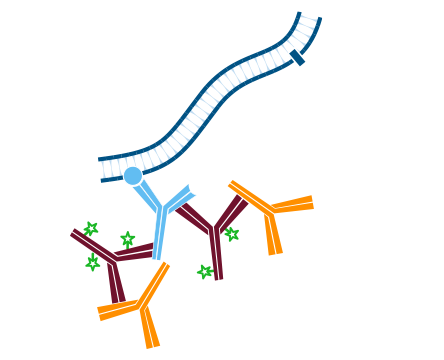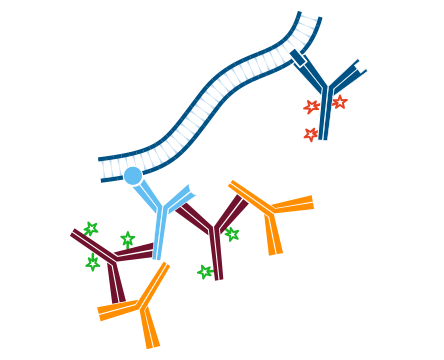Monovalent Fab Fragment Affinity-Purified Antibodies for Blocking and Double Labeling Primary Antibodies from the Same Host Species
Monovalent Fab fragments of affinity-purified secondary antibodies are offered to cover (block) the surface of immunoglobulins for double labeling primary antibodies from the same host species, or to block endogenous immunoglobulins in tissue sections or on cell surfaces. They can be used for these purposes because Fab fragments have only a single antigen binding site (i.e. they are monovalent).
In contrast, divalent antibodies (whole IgG and F(ab’)2 fragments) have two antigen binding sites. After labeling the first primary antibody, some antigen binding sites on the first secondary antibody may remain open which could capture the second primary antibody introduced in a subsequent step. Consequently, it will appear as overlapping labeling, even though there may not be overlapping antigens. Therefore, divalent antibodies should not be used for blocking or for double labeling two primary antibodies from the same species.
Monovalent Fab secondary antibodies are not necessary when primary antibodies from the same host species are different classes of immunoglobulins, such as IgG and IgM, or different subclasses of IgG, such as Mouse IgG1 and Mouse IgG2a. In these cases, it is much easier and more effective to use class specific or subclass specific antibodies, respectively, to distinguish between the two primary antibodies.
